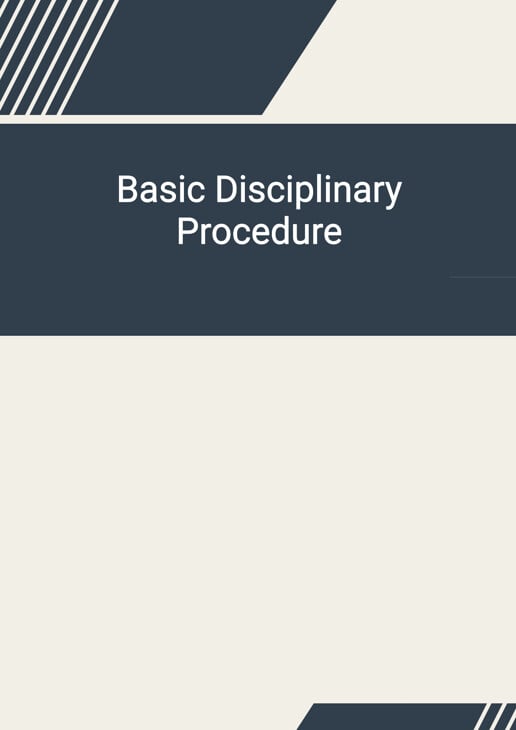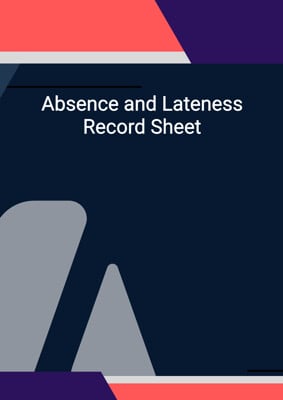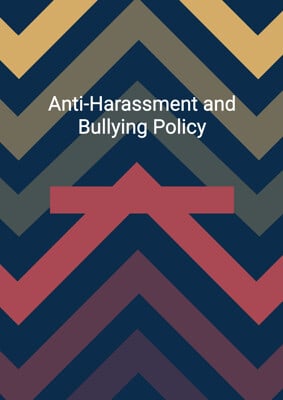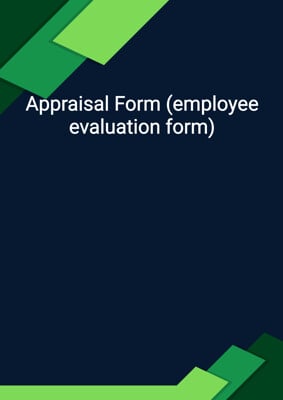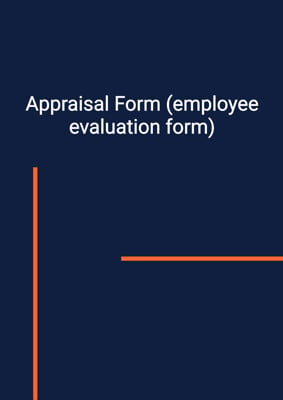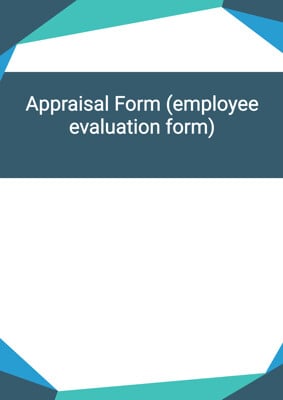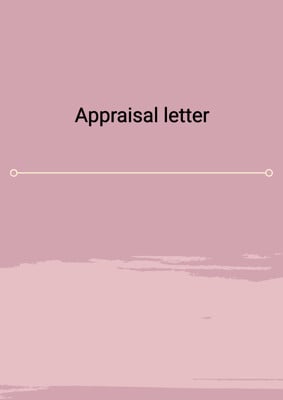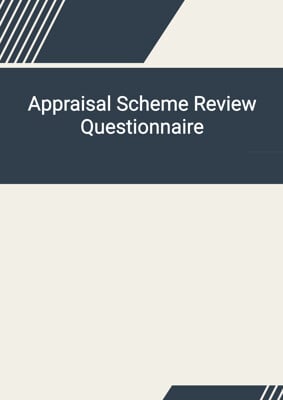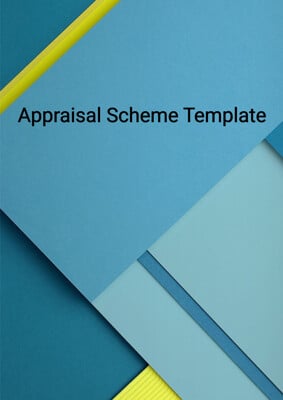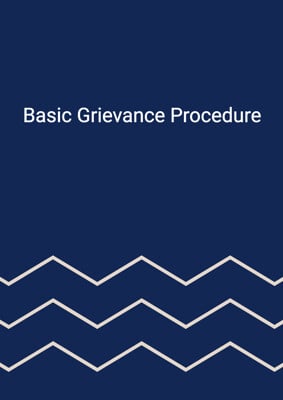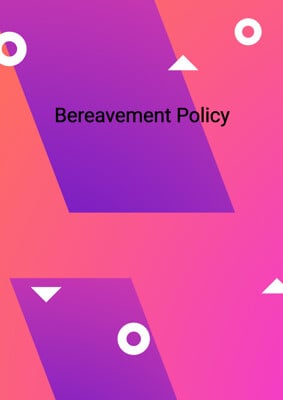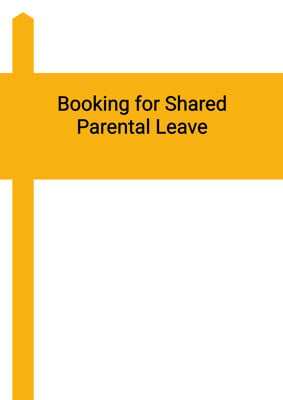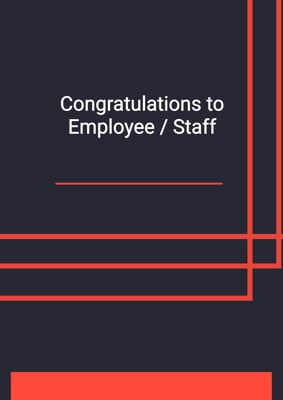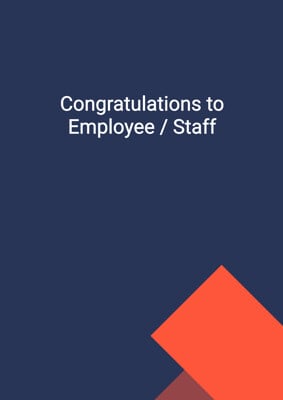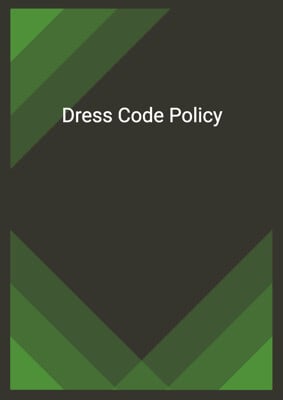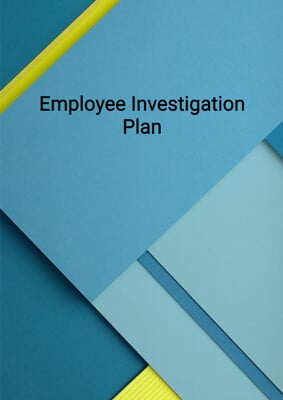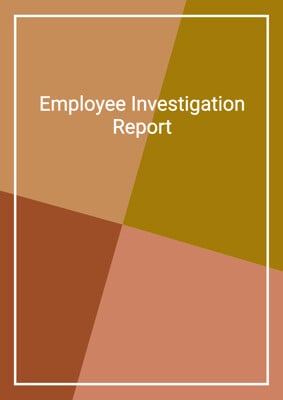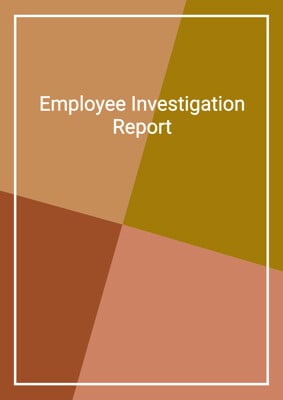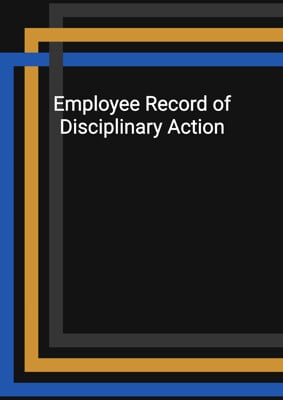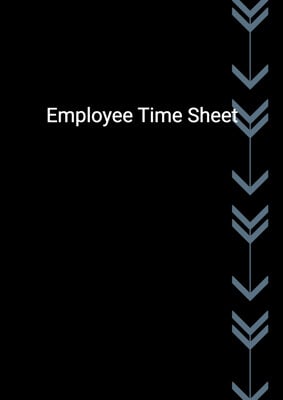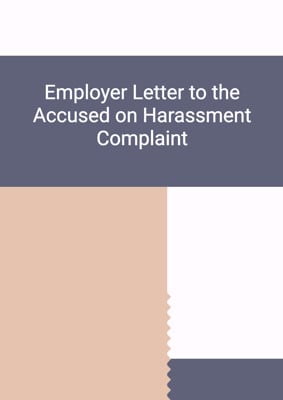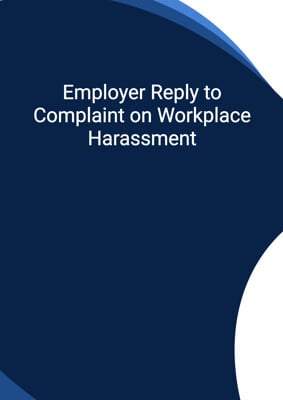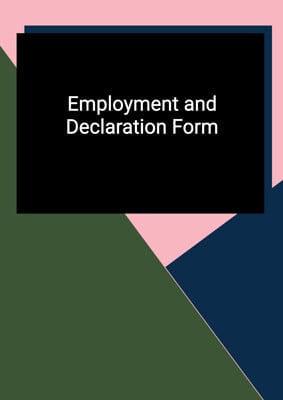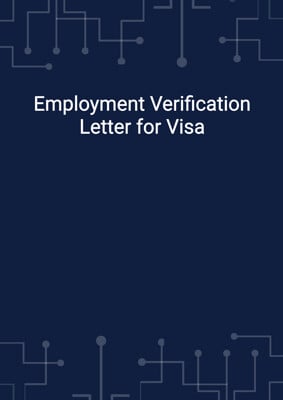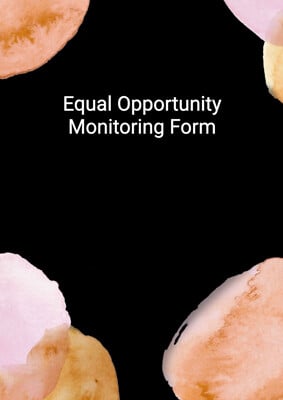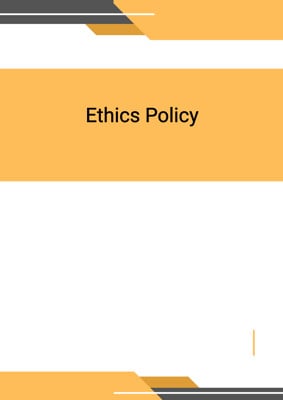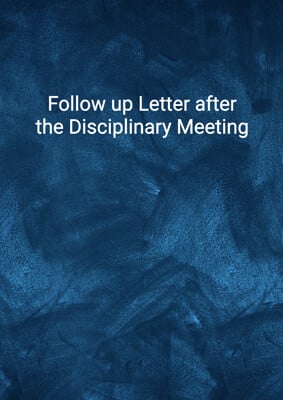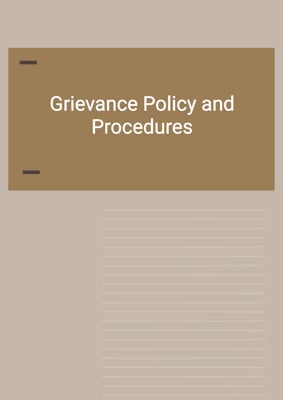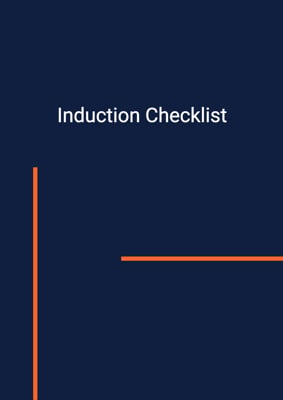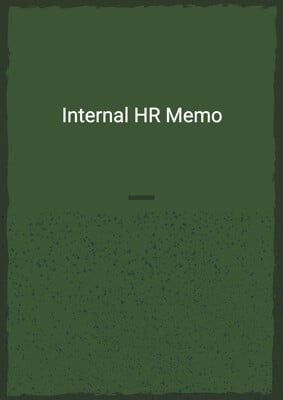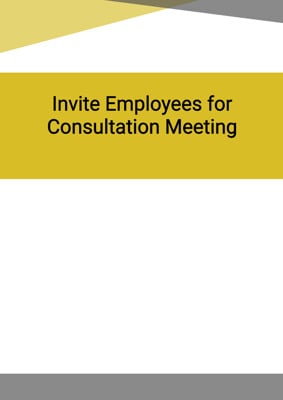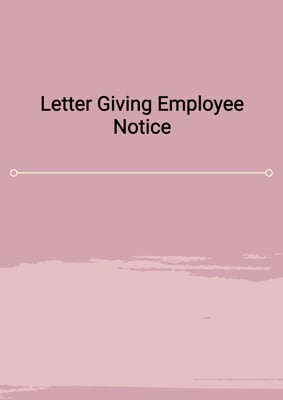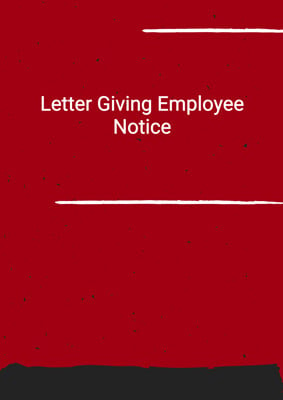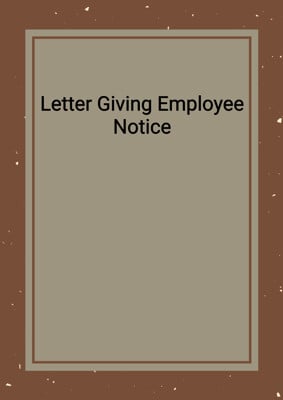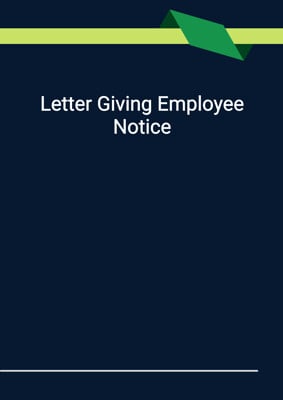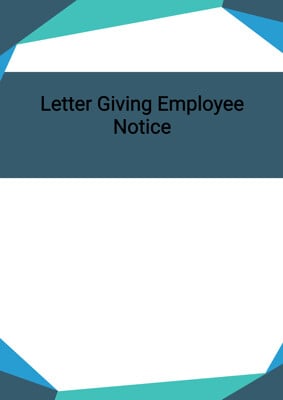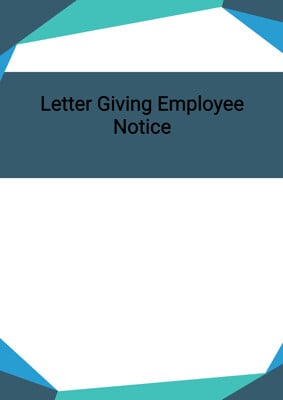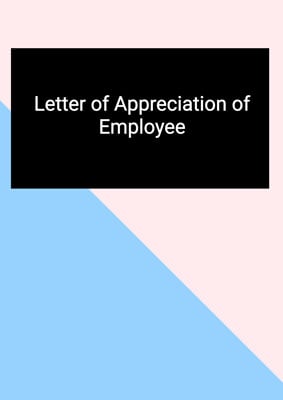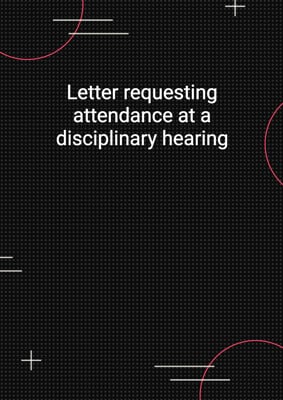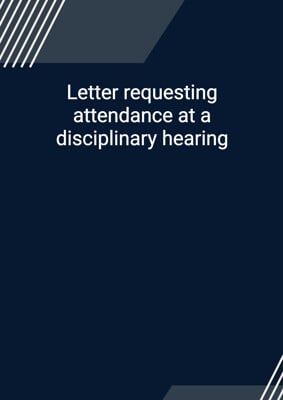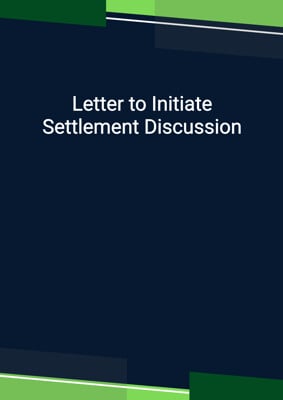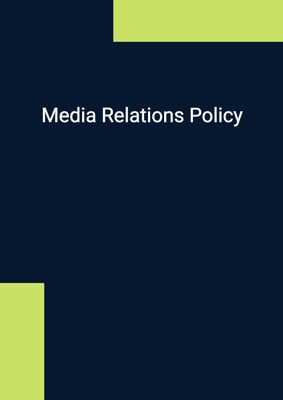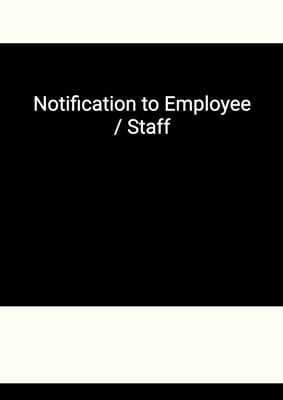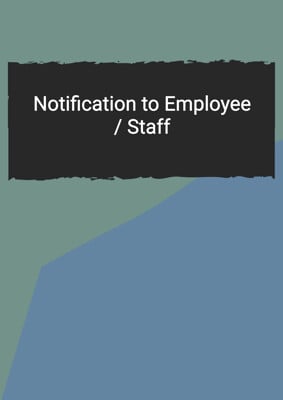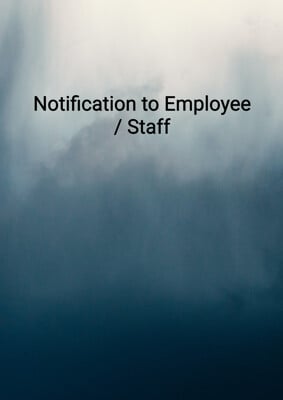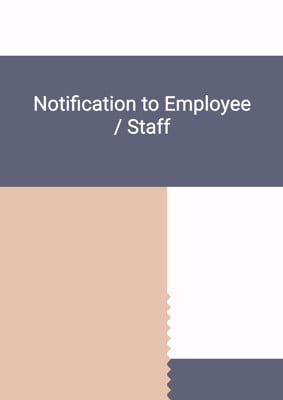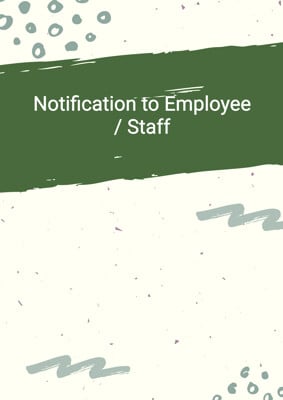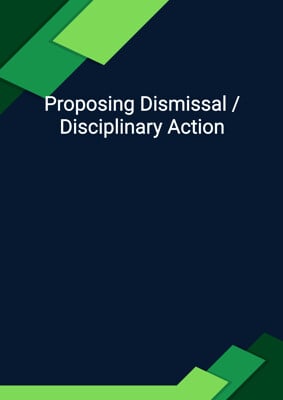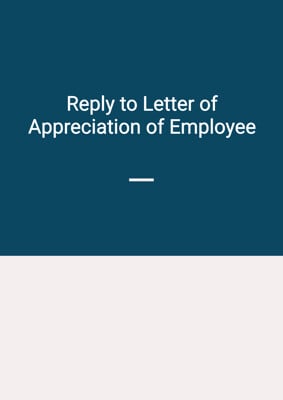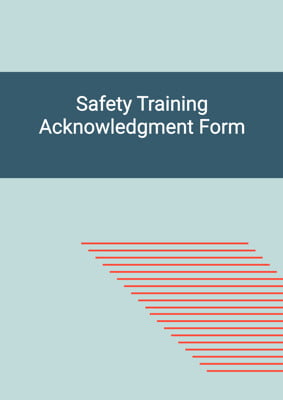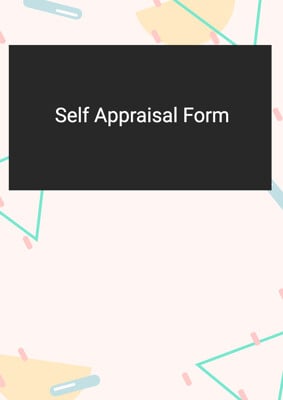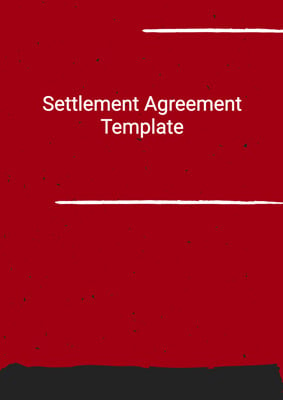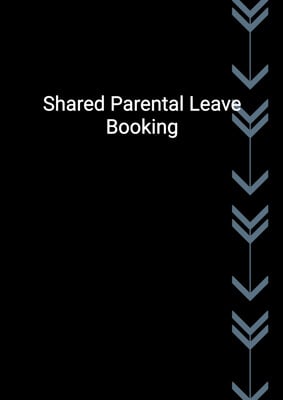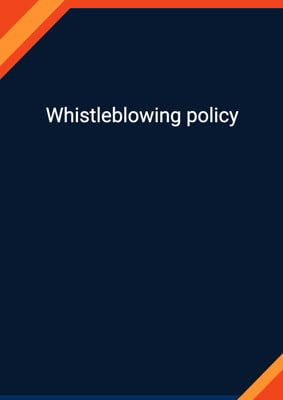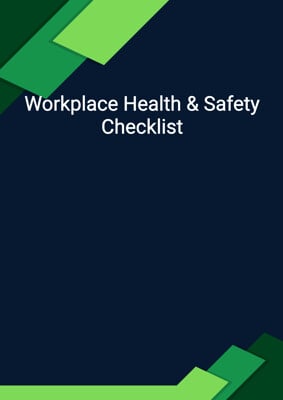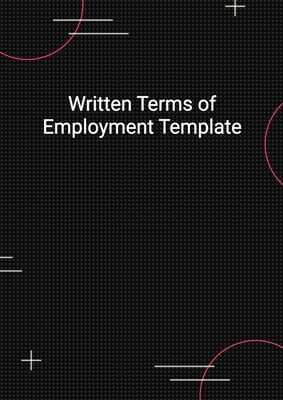How to Tailor the Document for Your Need?
01
Create Document
Click "Create Document" button and the document will be prepared with your account details automatically filled in.
02
Fill Information
Please fill in any additional information by following the step-by-step guide on the left hand side of the preview document and click the "Next" button.
03
Get Document
When you are done, click the "Get Document" button and you can download the document in Word or PDF format.
04
Review Document
Please review the document carefully and make any final modifications to ensure that the details are correct before publication / distribution.
Document Preview
Document Description
The Basic Disciplinary Procedure document is a crucial document for any organization as it outlines the process and guidelines for handling disciplinary issues within the company. The purpose of this document is to help and encourage all employees to achieve and maintain standards of conduct, attendance, and job performance. It ensures consistent and fair treatment for all employees.
The document begins with an introduction that emphasizes the importance of maintaining standards of conduct, attendance, and job performance. It highlights the fact that the company rules and this procedure apply to all employees. The aim is to provide a detailed overview of the principles and steps involved in the disciplinary process.
The document is divided into three main sections: purpose and scope, principles, and the procedure. Each section provides a comprehensive explanation of its respective topic.
The purpose and scope section explains the objective of the document, which is to maintain standards of conduct, attendance, and job performance. It emphasizes the importance of informal action to resolve problems and states that no disciplinary action will be taken until the case has been fully investigated. It also highlights the employee's right to be accompanied by a trade union representative or work colleague at all stages of the procedure.
The principles section further elaborates on the key principles that guide the disciplinary process. It emphasizes the employee's right to state their case before any decision is made at a disciplinary meeting. It also mentions that no employee will be dismissed for a first breach of discipline, except in the case of gross misconduct. The section also highlights the employee's right to appeal against any disciplinary action.
The procedure section provides a step-by-step guide to the disciplinary process. It begins with the first stage of the formal procedure, which includes an improvement note for unsatisfactory performance or a first warning for misconduct. It explains the content of each of these actions and the right of appeal. It also mentions that a record of the improvement note or warning will be kept for a specified period.
The next stage is the final written warning, which is given if the offense is sufficiently serious or if there is further misconduct or a failure to improve performance. The section explains the content of the final written warning and its implications. It also mentions that a copy of the written warning will be kept by the supervisor but will be disregarded for disciplinary purposes after a specified period.
The final step in the procedure is dismissal or another sanction, such as demotion or disciplinary suspension. The section explains the process for dismissal, including the involvement of the appropriate senior manager, providing reasons for dismissal, and the right of appeal. It also mentions that if a sanction short of dismissal is imposed, the employee will receive details of the complaint and will be warned that dismissal could result if there is no satisfactory improvement.
The document also includes a section on gross misconduct, which provides examples of offenses that are normally regarded as gross misconduct. It explains the consequences of being accused of gross misconduct, including suspension from work and summary dismissal without notice or payment in lieu of notice.
Finally, the document outlines the appeals process, stating that an employee who wishes to appeal against a disciplinary decision must do so within five working days. It mentions that the senior manager will hear all appeals and their decision is final. It also states that at the appeal, any disciplinary penalty imposed will be reviewed.
In conclusion, the Basic Disciplinary Procedure document is a comprehensive guide that outlines the importance of maintaining standards of conduct, attendance, and job performance. It provides a detailed introduction and explanation for each section of the document, ensuring that employees are aware of their rights and the steps involved in the disciplinary process.
How to use this document?
1. Familiarize yourself with the purpose and scope of the document. Understand that it is designed to help and encourage all employees to achieve and maintain standards of conduct, attendance, and job performance.
2. Be aware of the principles that guide the disciplinary process. Know that informal action will be considered to resolve problems and that no disciplinary action will be taken until the case has been fully investigated.
3. Understand the procedure section, which provides a step-by-step guide to the disciplinary process. Be familiar with the first stage of the formal procedure, which includes an improvement note for unsatisfactory performance or a first warning for misconduct.
4. Know the content and implications of the final written warning, which may be given if the offense is sufficiently serious or if there is further misconduct or a failure to improve performance.
5. Understand the process for dismissal or other sanctions. Know that dismissal decisions can only be taken by the appropriate senior manager and that the employee will be provided with reasons for dismissal and the right of appeal.
6. Be aware of the examples of offenses that are normally regarded as gross misconduct. Understand the consequences of being accused of gross misconduct, including suspension from work and summary dismissal without notice or payment in lieu of notice.
7. Familiarize yourself with the appeals process. Know that an employee who wishes to appeal against a disciplinary decision must do so within five working days and that the senior manager's decision is final.
8. Remember that throughout the disciplinary process, it is important to maintain open communication and seek clarification if needed. It is also crucial to adhere to the company rules and procedures to ensure consistent and fair treatment for all employees.
Not the right document?
Don’t worry, we have thousands of documents for you to choose from:
